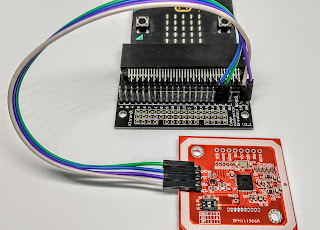Microbit power bank
Powering microbits outdoors isn't easy: dry cells have quite a low capacity. Typically a microbit battery of 2 AAA cells can provide around 500 mAh, which might power a weather station for a couple of days.
Another solution is a power bank. These are rechargeable batteries that are aimed at the mobile phone market - to keep your phone battery topped up.
They are charged from a mains charger via a USB input port, and deliver 5V from a second port. The one I'm using is an Apachie 5200 mAh, which is available for around £8. It's the size of a typical phone.
Power banks are intended to give your phone 's battery a boost - not to power some electronics which need a continuous supply! So they come with a means of testing if the load has been disconnected; the power bank can then switch off its internal circuits to reduce power wastage.
This power bank does that by switching off for a short time (about 500 ms), every 5 seconds or so. That will cause the microbit supply to collapse. We need a big storage capacitor to keep the voltage at a safe level! I found a capacitor of at least 4000 uF was needed, and 4700 uF is a common value. The circuit diagram looks like this (the low-drop diode prevents discharge back into the power bank):
 |
| Circuit diagram |
Here's what the output voltage looks like when loaded by a microbit running a simple program.
 |
| Power bank 5V output (yellow) Microbit 3.3V output (blue) |
I ran it for 10 days, with an estimated load of 10 mA, and the output to the microbit held steady at about 4.9V average.





Comments
Post a Comment